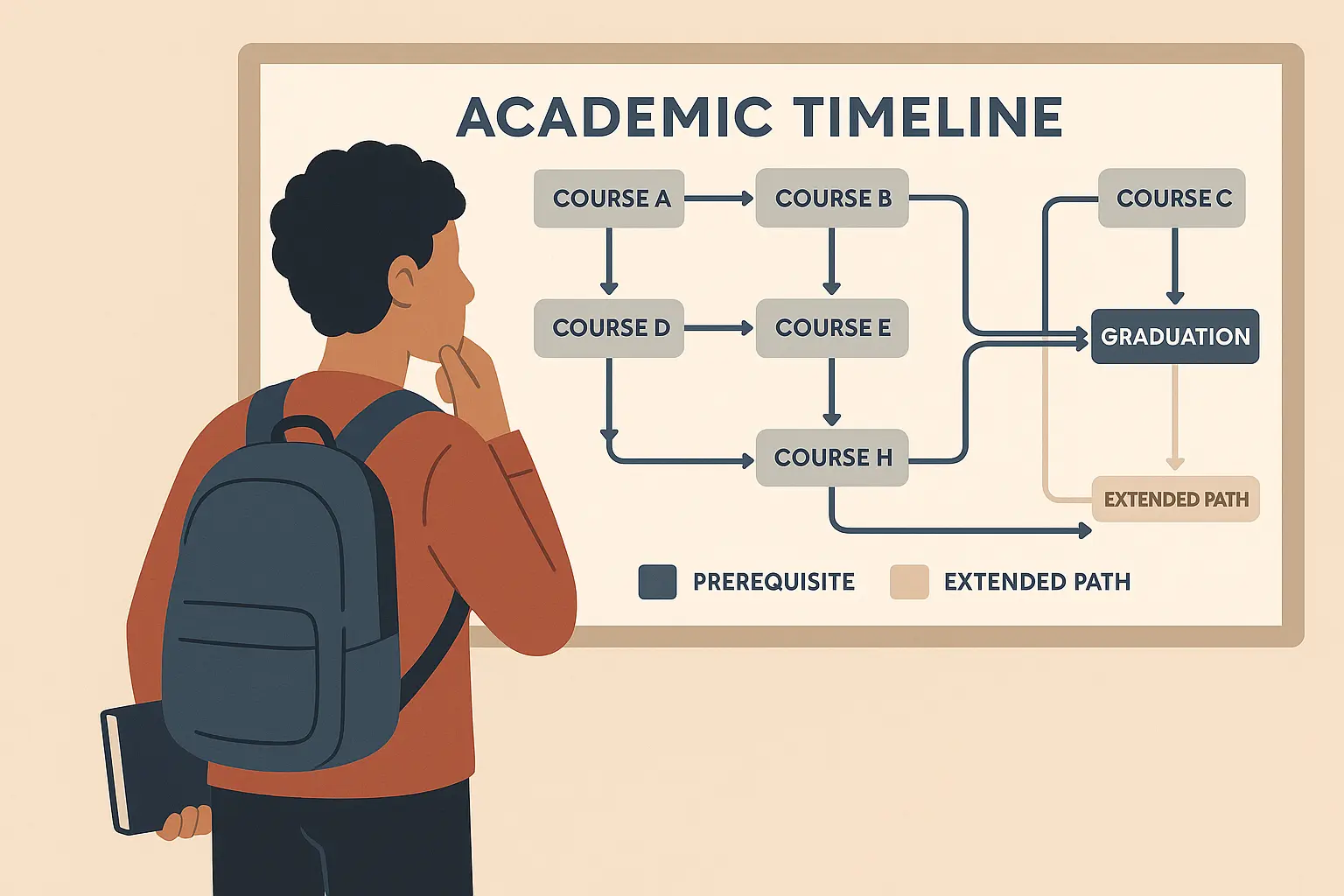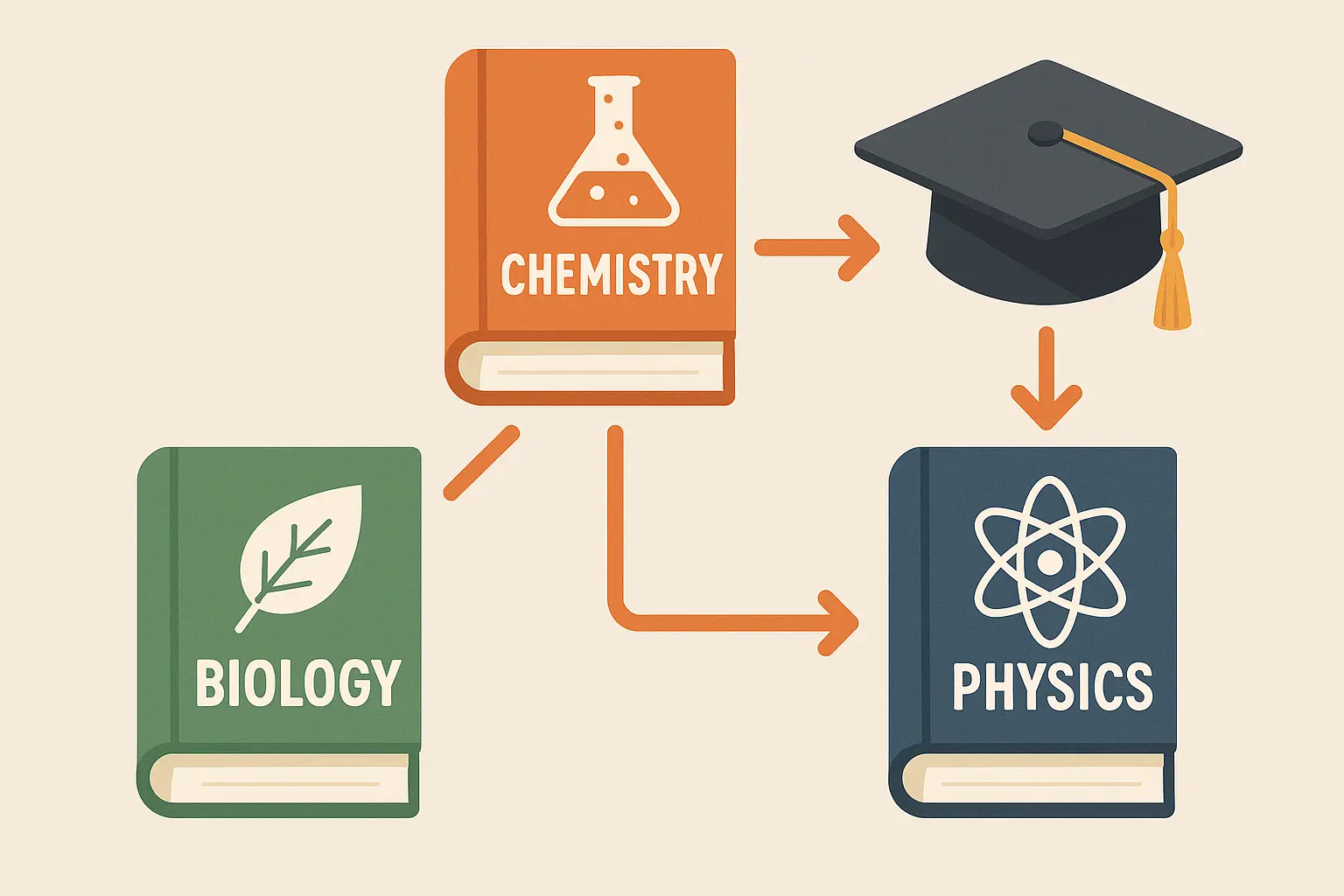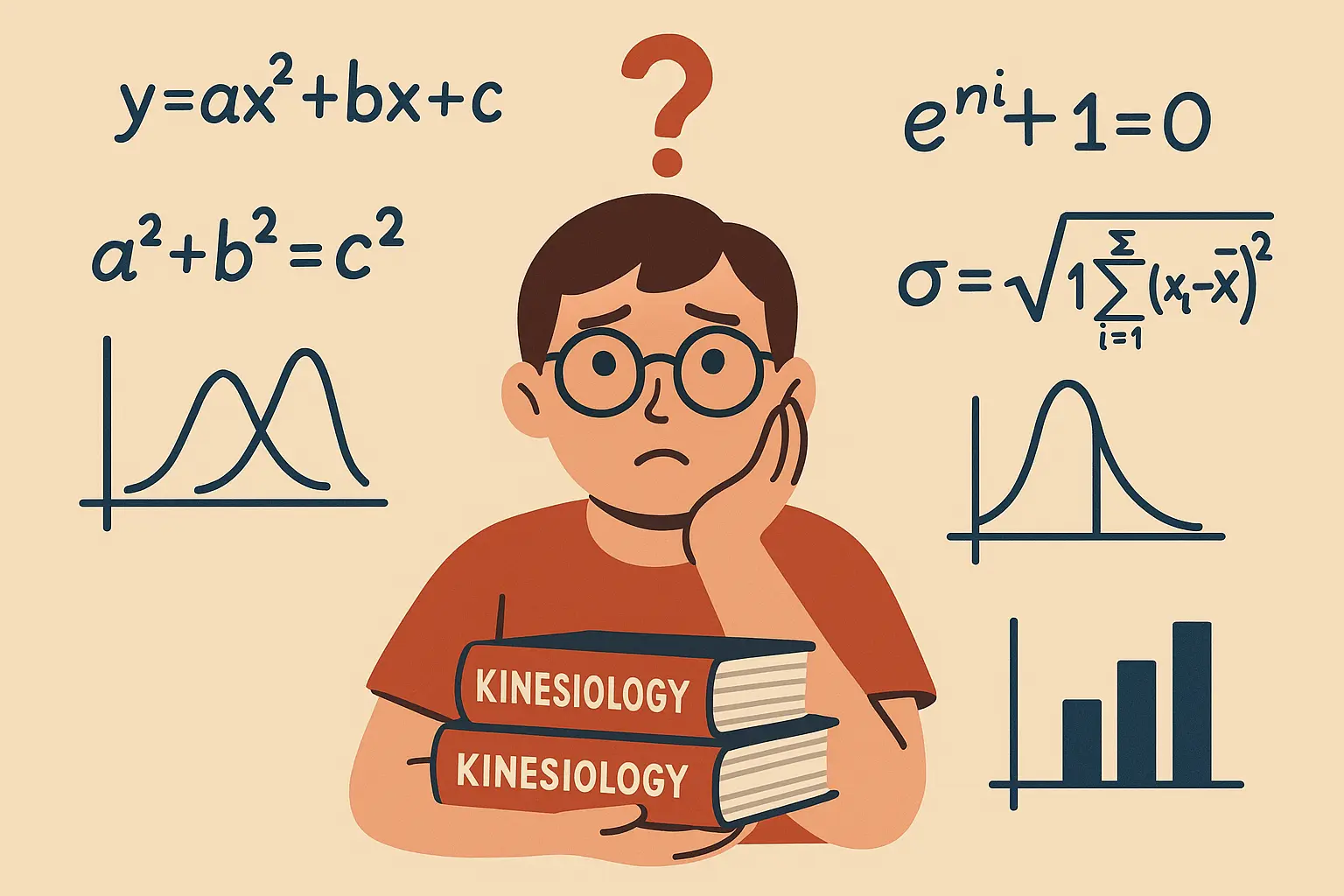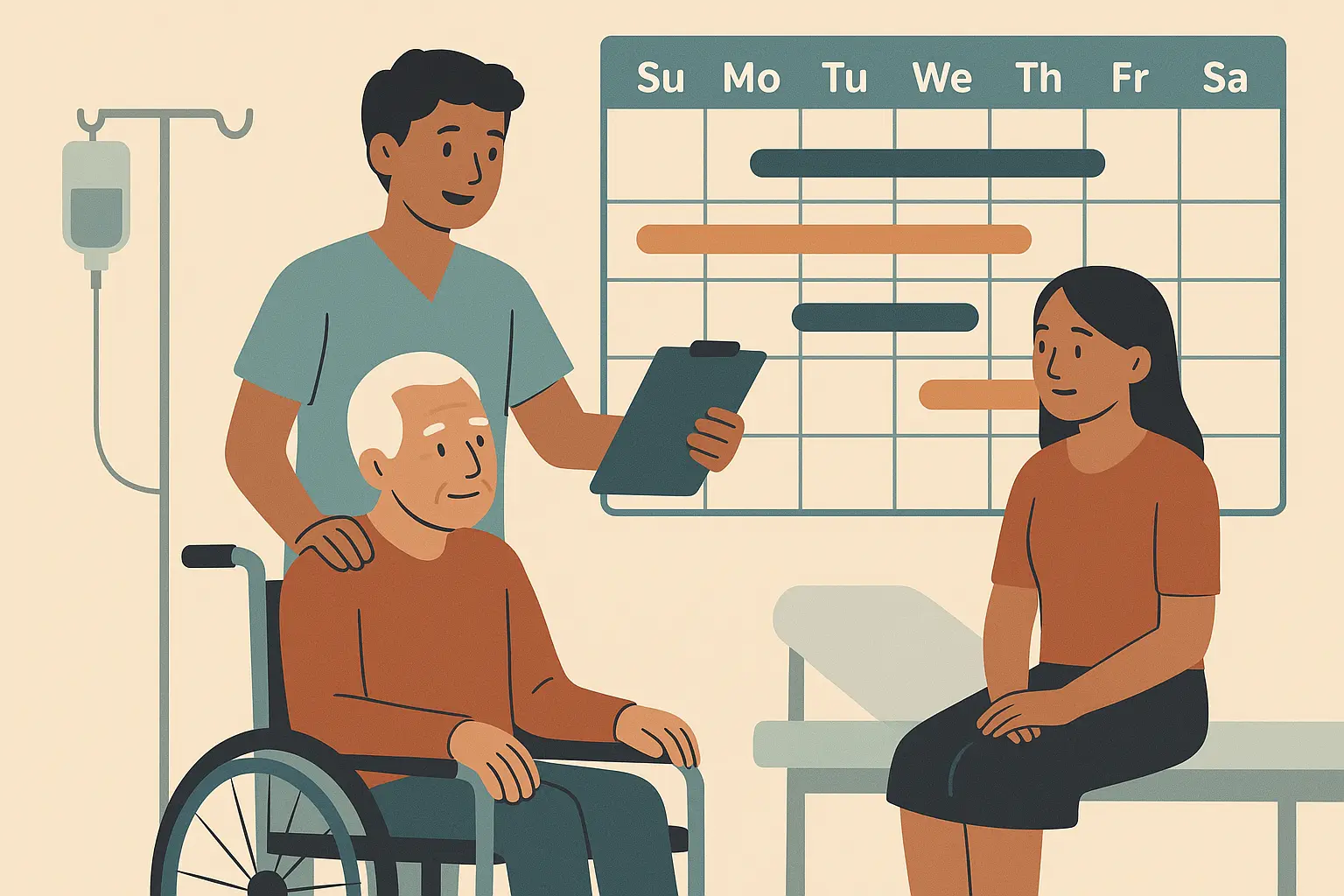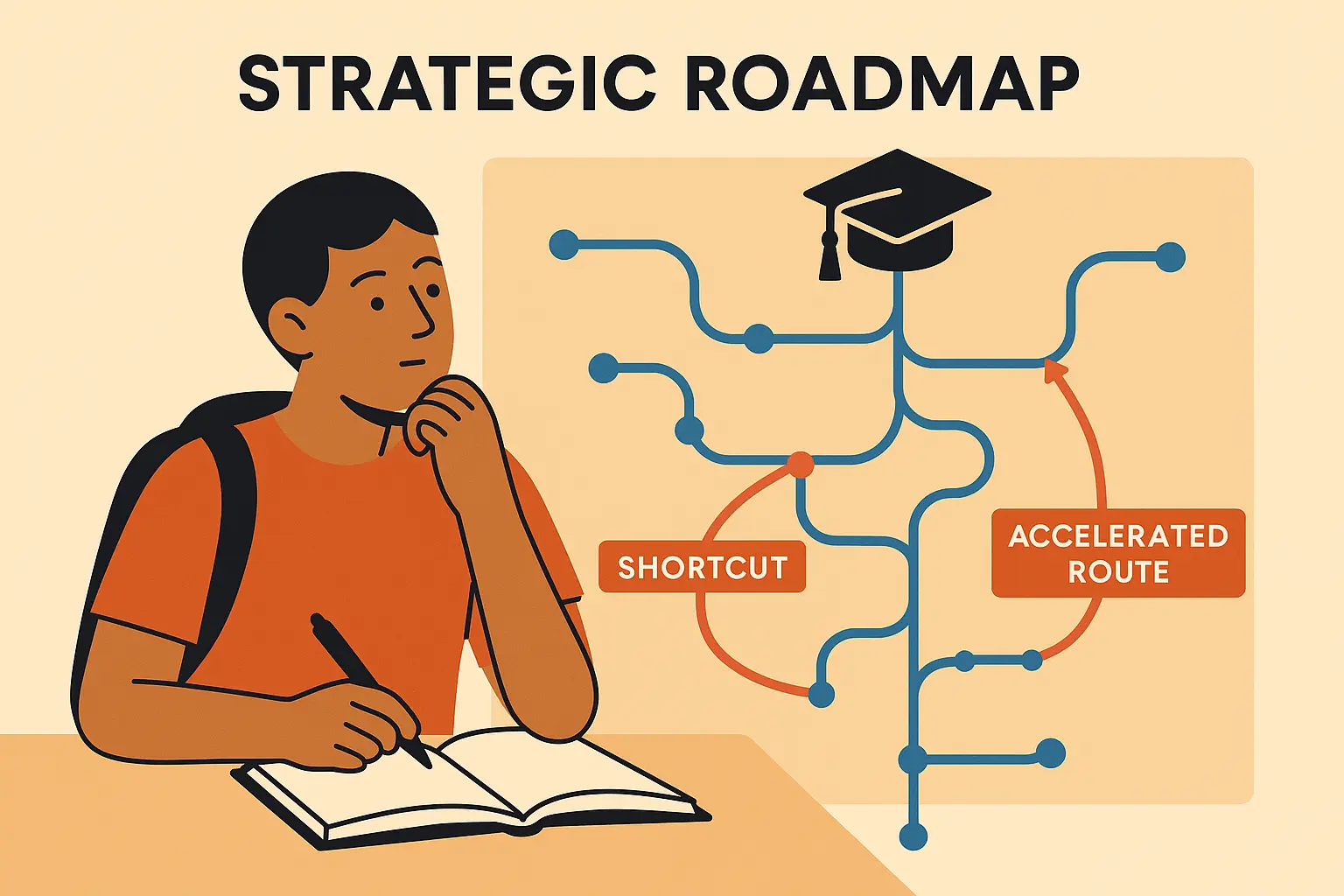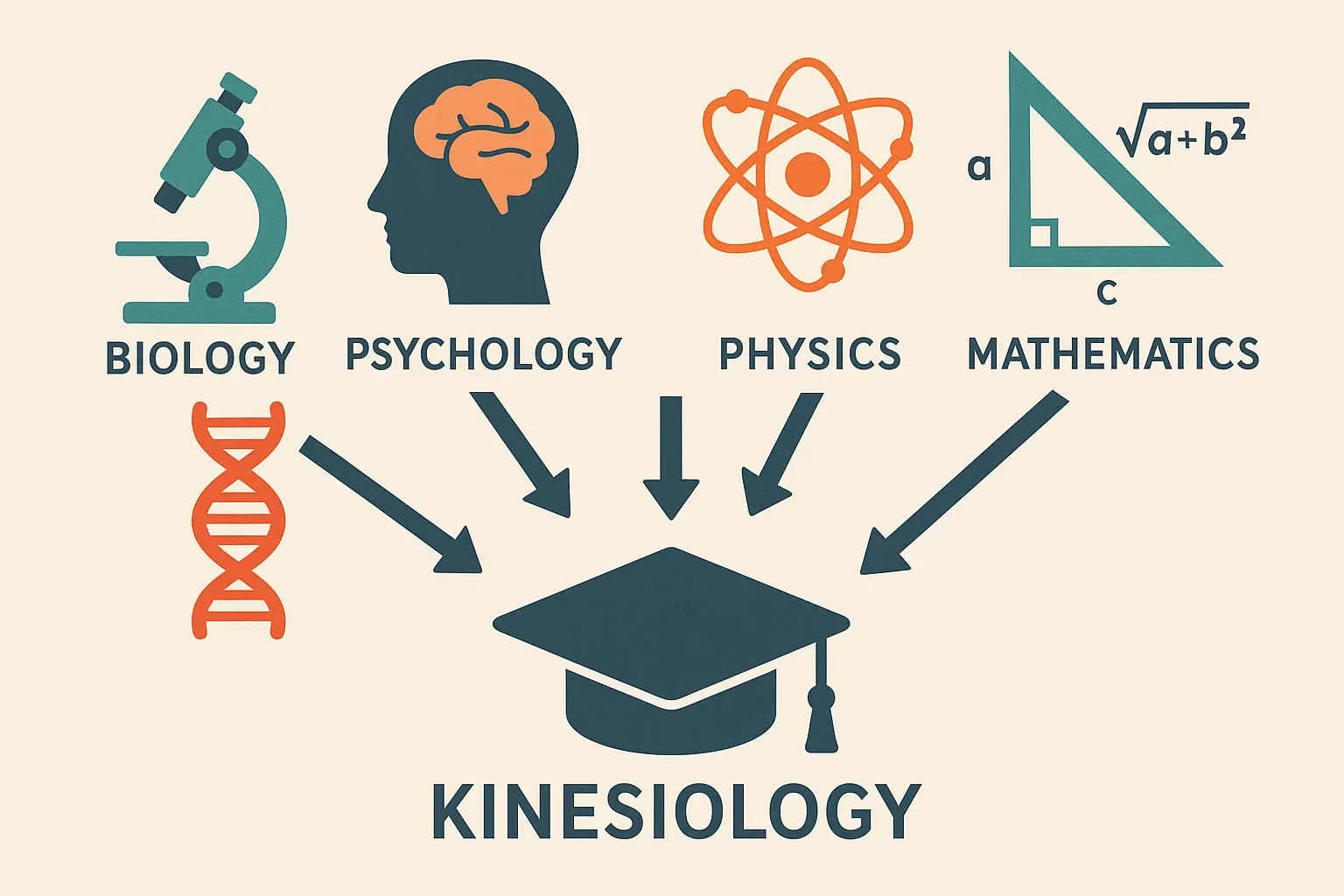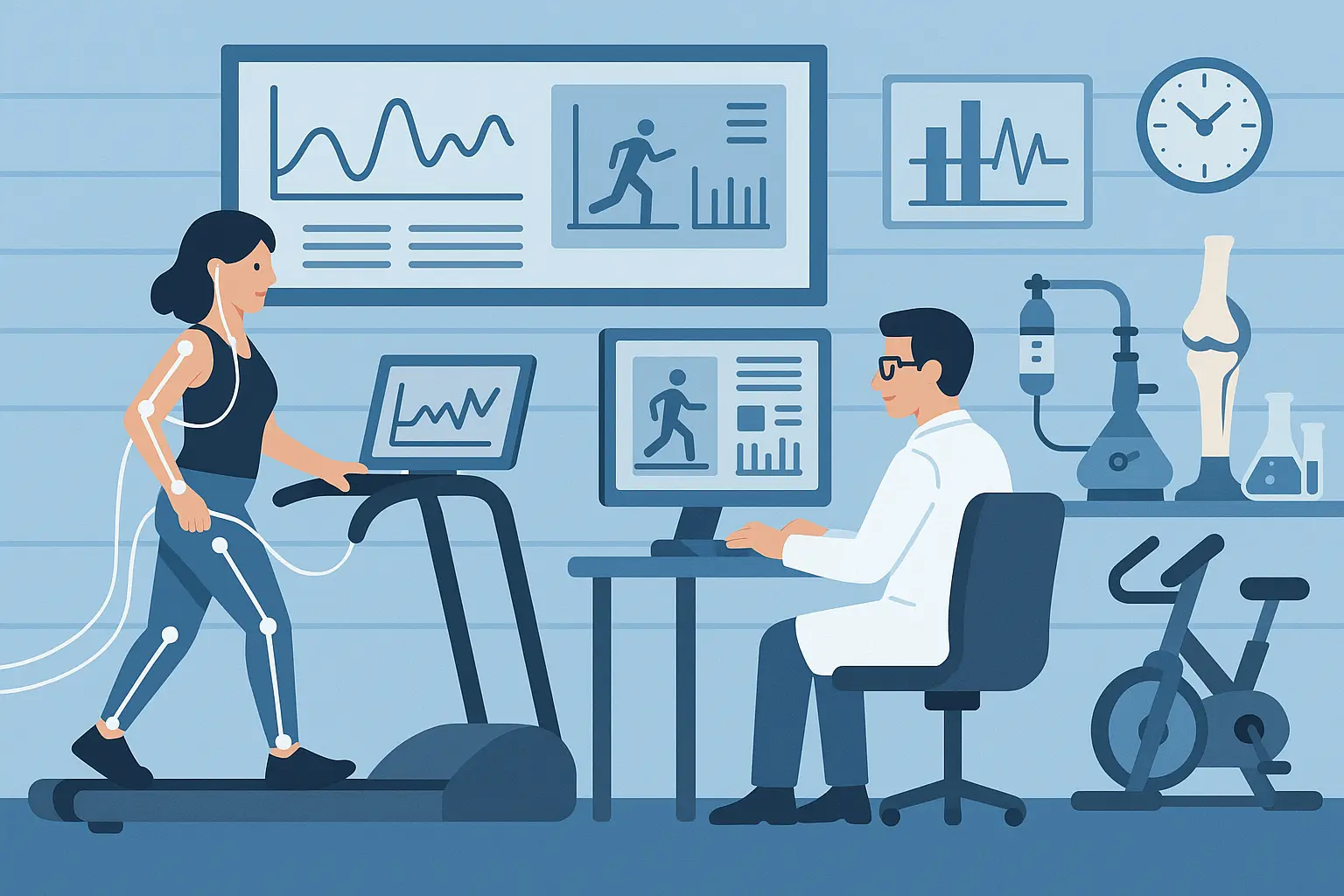Look, if you’re planning on getting a kinesiology degree in four years like the brochures promise, I’ve got some news for you. It’s probably not happening. I’ve watched way too many students discover that studying human movement takes way longer than expected – we’re talking five or even six years. The reality? You’ll hit prerequisite roadblocks, clinical scheduling nightmares, and specialization requirements that nobody warns you about when you first declare your major. Here’s the truth: it usually takes 4-5 years to become a kinesiologist, including earning a bachelor’s degree and becoming credentialed. But that’s being optimistic.
Table of Contents
-
The Academic Maze That Extends Your Timeline
-
Hidden Costs When Your Degree Takes Longer
-
Smart Strategies to Speed Up Your Journey
-
Professional Development That’s Worth the Extra Time
-
What Kinesiology Actually Is (And Why It Matters for Your Timeline)
-
Final Thoughts
TL;DR
-
Most kinesiology students need 5-6 years to graduate because prerequisites are brutal and clinical requirements don’t care about your timeline
-
You’ll need classes you never heard of in anatomy, physiology, chemistry, and physics before you can even touch the fun kinesiology stuff – that’s easily 1-2 extra semesters right there
-
Those extra years? That’s $20,000-40,000 more you’re spending, plus all the money you’re not making while still in school
-
Smart planning with AP credits, summer classes, and community college transfers can actually save you time – if you do it right
-
Want to be a physical therapist? Tack on extra psychology courses and hundreds of volunteer hours on top of everything else
-
Clinical rotations and internships often force you to take fewer classes, stretching out your timeline even more
The Academic Maze That Extends Your Timeline
Here’s what nobody tells you about kinesiology programs: they’re basically designed to trip you up. I’ve seen too many freshmen walk into advising meetings thinking they’ll coast through in four years, only to discover that this field requires you to master biology, physics, psychology, and math – all at the same time. Each subject has its own prerequisite chain, and missing one link can derail your entire graduation plan.
When you’re pursuing a kinesiology degree, you quickly realize you’re not just learning one thing – you’re essentially getting mini-degrees in multiple sciences. And these classes don’t just stack on top of each other nicely. They’re all tangled up in ways that create bottlenecks you never saw coming.
Students dealing with kinesiology timelines face similar challenges to those wondering how long does it take to get a bachelor degree in other fields, except the science requirements make everything way more complicated. Your kinesiology journey becomes a nightmare when you realize that every single advanced class depends on completing multiple foundation courses first.
The Domino Effect of Classes You Have to Take Before the Classes You Actually Want
Prerequisites in kinesiology are like a cruel game where you can’t level up until you’ve beaten every boss in order. Most students don’t show up to college with the complete science background they need, which means spending your first year (or more) catching up instead of diving into the kinesiology courses you’re actually excited about.
My roommate thought she’d breeze through kinesiology in four years. Three years later, she’s still taking prerequisites because nobody told her she needed two semesters of chemistry before she could even touch the fun stuff. She had to take College Algebra before Statistics, Statistics before Research Methods, General Biology before Anatomy & Physiology I, and Anatomy & Physiology I before Anatomy & Physiology II. This chain reaction alone added an extra year to her timeline, pushing her PT school dreams back significantly. Her degree went from four years to five and a half because of these sequential requirements that nobody explains upfront.
Want to know the most frustrating part? You can’t just power through these faster. Each course builds essential knowledge for the next level, and trying to rush through foundation material usually backfires spectacularly when you hit the advanced stuff.
Science Requirements That Take Forever
Kinesiology programs demand a science background that typically requires 2-3 semesters of prep work before you can even think about the major-specific courses. You’ll need anatomy and physiology (often two separate torture sessions), general chemistry, organic chemistry, and physics – and many of these have their own prerequisites. If you didn’t take advanced science in high school, you might find yourself starting with basic biology or even remedial math. Chemistry became my friend Jake’s nemesis. Who knew understanding molecules was essential for understanding muscles?
|
Science You Need |
How It Works |
Semesters You’ll Spend |
|---|---|---|
|
Basic Biology → Anatomy & Physiology I → Anatomy & Physiology II |
You can’t skip ahead – each builds on the last |
3 semesters |
|
College Algebra → Statistics → Research Methods |
Math sequence that can’t be rushed |
3 semesters |
|
General Chemistry → Organic Chemistry |
Sequential torture |
2 semesters |
|
College Physics I → College Physics II |
More sequential torture |
2 semesters |
|
Developmental Math → College Algebra → Calculus |
If you’re starting from scratch |
3 semesters |
These aren’t suggestions for your kinesiology degree – they’re absolute requirements that determine when you can move forward. I’ve seen students try to skip prerequisites or double up, and it rarely ends well. The knowledge builds systematically, and gaps in understanding become massive problems in advanced courses.
The chemistry sequence particularly catches people off guard. You need general chemistry before organic chemistry, and organic chemistry before biochemistry. Each course is typically offered only once per year, so missing one semester can push your entire timeline back by a full year. It’s honestly soul-crushing.
Math Requirements That Nobody Warns You About
Research methodology and biomechanics courses require solid foundations in calculus and statistics that most students don’t have when they start college. These math requirements often surprise students who thought kinesiology would be more hands-on and less computational. Turns out “exercise science” involves a lot more science than exercise. Missing these foundations can easily add another semester to your graduation timeline.
The statistics requirement goes way beyond basic math. You need to understand research design, data analysis, and statistical interpretation to succeed in evidence-based practice courses. Most students have no idea how much math is actually involved in modern kinesiology programs, especially when you get into biomechanics and exercise physiology. It’s like they sneak the math in through the back door.
Program Structures That Vary Way More Than You’d Expect
Different schools structure their kinesiology programs in completely different ways, and this can seriously mess with your timeline. Some schools pack everything into a tight 120-credit program, while others require 130+ credits with extensive clinical components. The variation between programs can be shocking – I’ve seen requirements range from 120 credits at one university to 145 credits at another.
Bachelor’s Programs That Aren’t Really Four Years
Standard Bachelor of Science in Kinesiology programs typically require 120-130 credit hours, which theoretically fits into four years if everything goes perfectly. But here’s the reality: most students need five years because of prerequisite gaps, clinical scheduling nightmares, and the fact that advanced courses have to be taken in order. Full-time enrollment becomes impossible when you’re juggling internships and clinical rotations. According to Barton College, a Bachelor of Science degree in Kinesiology is typically a four-year program that requires about 120 credit hours to complete. But that’s assuming you show up perfectly prepared, which most people don’t.
The credit hour count doesn’t tell the whole story. Those 120-130 credits include prerequisites that many students need to complete before they can even start their actual kinesiology coursework. When you factor in the sequential nature of science courses and clinical requirements, the four-year timeline becomes a fantasy for most students.
Understanding is it worth it to get a college degree becomes crucial when you’re looking at extended timelines for specialized programs like kinesiology. The investment in time and money needs to make sense for your career goals and financial situation.
Accelerated Programs and Extended Options
Some schools offer three-year accelerated programs for exceptional students who show up with tons of AP credits and can handle brutal course loads. On the flip side, many schools now offer five-year combined bachelor’s/master’s tracks that frontload graduate coursework, which can actually be more efficient if you’re planning graduate school anyway.
Accelerated kinesiology programs sound appealing, but they require incredible dedication and often sacrifice the hands-on experience that makes kinesiology education valuable. You’re cramming the same rigorous content into less time, which can be overwhelming when you’re dealing with complex scientific concepts that actually need time to sink in.
Clinical Requirements That Don’t Care About Your Schedule
Required internships, practicum hours, and clinical rotations often become the biggest bottleneck in your timeline. These experiences happen during specific semesters and may force you to reduce your course load or take classes part-time. The scheduling constraints of clinical sites don’t align with academic calendars, which can push graduation back by a semester or more.
Clinical sites operate on their own schedules, and they don’t care about your graduation timeline. I’ve seen students have to choose between taking a full course load and completing required clinical hours because the timing didn’t work out. These practical experiences are essential, but they add complexity that can seriously extend your graduation date. Nobody mentions that clinical sites have their own drama – some are amazing, others will make you question your life choices.
How Your Specialization Choice Affects Your Timeline
The kinesiology specialization you choose can add anywhere from one semester to two full years to your timeline. The differences aren’t just in credit hours – they’re in the complexity and sequencing of requirements that each track demands. Some tracks are straightforward, while others essentially require you to complete additional mini-programs within your degree.
Exercise Science Track Demands
Exercise science concentrations typically require additional laboratory courses, research components, and hands-on experience that extend completion time. However, this extra investment prepares you for graduate school applications or professional certification programs. You’ll spend more time in labs conducting research, which is valuable but seriously time-consuming.
Recent research from the University of Alberta highlights “the adaptability of KSR graduates and the wide range of jobs they might want to consider”, showing how exercise science tracks prepare students for diverse career paths beyond traditional fitness roles. This versatility comes at the cost of additional coursework that extends your timeline.
The research component of exercise science tracks often requires independent study credits, thesis work, or capstone projects that don’t fit neatly into traditional semester schedules. You might need to extend your enrollment to complete research projects or wait for specific equipment availability in labs.
Pre-Physical Therapy Requirements That Add Up Fast
Students pursuing physical therapy preparation face additional requirements beyond standard kinesiology curricula, including psychology courses, extensive volunteer hours, and clinical observation requirements. These additions can easily extend your undergraduate timeline by a full year, but they’re absolutely essential for competitive PT school applications.
I watched my friend Jake realize that his pre-PT track required all the standard kinesiology courses, plus General Psychology, Abnormal Psychology, Developmental Psychology, 200+ volunteer hours at different clinical sites, and 100+ observation hours with licensed physical therapists. These additional requirements stretched his degree from 4 to 5.5 years, but he got accepted into his top-choice PT program. The extra time paid off in graduate school admissions, but it was a tough financial pill to swallow.
The volunteer and observation hours for pre-PT tracks can’t be rushed or completed during regular semesters. You need to build relationships with clinical sites, complete background checks, and often work around the schedules of practicing physical therapists. These requirements add substantial time that you can’t really plan around.
Hidden Costs When Your Degree Takes Longer
Let’s be real about the financial impact of extended kinesiology timelines – it goes way beyond just paying for extra tuition. I’ve run the numbers for students, and they’re brutal. We’re talking about tens of thousands of dollars in opportunity costs that most people never consider when planning their education investment.
Extended timelines create a double financial hit: you’re paying more for education while simultaneously delaying your entry into the workforce. That extra year? It’s basically buying a decent used car – except you get credits instead of wheels.
The cost of a college degree extends way beyond tuition when programs take longer than expected to complete. Your kinesiology investment grows substantially when you factor in extended enrollment periods and delayed career entry.
Financial Reality Check for Extended Programs
The true cost of a kinesiology degree becomes apparent when you factor in extended enrollment periods, specialized equipment needs, and the opportunity cost of delayed career entry. Published tuition rates only tell part of the story, and the additional expenses can seriously impact your post-graduation financial situation.
Most students focus on semester-by-semester costs without calculating the cumulative impact of extended enrollment. Your expenses multiply when you consider that each additional semester includes tuition, fees, housing, meals, books, and the income you’re not earning by staying in school longer. Your parents budgeted for four years. Good luck explaining why you need funding for year five.
What Those Extra Semesters Actually Cost You
Students taking 5-6 years to complete their degree face additional semester fees , housing costs, meal plans, and textbook expenses that can add $20,000-40,000 to their total educational investment. This doesn’t even account for the income you’re not earning during those extra semesters – money that could be going toward student loan payments or building your career foundation. Research shows that the average tuition costs for master’s programs in 2023-2024 ranged from $9,250-$30,970, compounding the financial impact of extended timelines.
|
What You’re Paying |
Per Semester |
Extra Year Cost |
2-Year Extension |
|---|---|---|---|
|
Tuition & Fees |
$8,000-12,000 |
$16,000-24,000 |
$32,000-48,000 |
|
Housing & Meals |
$6,000-10,000 |
$12,000-20,000 |
$24,000-40,000 |
|
Books & Supplies |
$800-1,200 |
$1,600-2,400 |
$3,200-4,800 |
|
Money You’re Not Making |
$15,000-25,000 |
$30,000-50,000 |
$60,000-100,000 |
|
Total Financial Hit |
$59,600-96,400 |
$119,200-192,800 |
The opportunity cost numbers represent real money that could be going toward student loan payments, building an emergency fund, or investing in your future. That $40k in extra costs? That’s a house down payment you’re spending on prerequisites.
Career Timing That Messes With Your Future
Delayed graduation doesn’t just affect your immediate finances – it messes with your entire career trajectory, professional development opportunities, and long-term earning potential in ways that compound over decades. The timing of when you enter the job market can influence your professional network, advancement opportunities, and salary progression.
Your degree completion timing affects when you can start building professional experience, pursuing advanced certifications, and establishing yourself in your chosen field. Each year of delay pushes back your entire career timeline. The opportunity cost isn’t just tuition – it’s watching your high school friends start their careers while you’re still in anatomy lab.
Professional Certification Windows
Many kinesiology careers require professional certifications with specific testing windows and continuing education requirements that align better with traditional four-year graduation timelines. Graduating late can mean missing optimal certification periods or having to wait additional months before you can take required exams.
Professional certifications in kinesiology-related fields often have prerequisites that include degree completion and specific coursework. When your timeline extends, you might miss certification exam windows or have to wait additional months to meet eligibility requirements. Pro tip from someone who learned the hard way: some certifications only offer testing twice a year, so timing really matters.
Graduate School Application Cycles
Extended undergraduate timelines can seriously mess with graduate school application cycles, potentially delaying entry into competitive programs like physical therapy or occupational therapy by an additional year. These programs have strict application deadlines and prerequisite completion requirements that don’t accommodate flexible graduation dates.
Graduate programs in health sciences operate on rigid timelines that don’t wait for students with extended degree completion dates. Missing application deadlines because your degree isn’t finished can mean waiting an entire additional year to apply, further extending your educational timeline and delaying career entry. It’s honestly frustrating watching your friends move on while you’re stuck waiting.
Smart Strategies to Speed Up Your Journey
Here’s the thing – strategic planning and alternative educational pathways can seriously cut down your kinesiology degree completion time while maintaining academic quality. I’ve seen students cut a full year off their timeline by making smart choices about credit accumulation and course sequencing.
The key to accelerating your degree lies in front-loading prerequisites and maximizing credit opportunities before you even step foot on campus. Students who plan strategically avoid the common pitfalls that extend graduation timelines.
Maximizing Credits Before You Even Start
Students can dramatically reduce degree completion time through strategic use of alternative credit sources and accelerated learning options. The key is starting this process during high school or even earlier in your college career, rather than trying to catch up later when options become more limited.
Early credit accumulation requires planning that begins in high school. The students who graduate on time or early are those who recognized the prerequisite challenges and addressed them proactively. Call the admissions office at your target school and ask for the actual prerequisite list – not the one on the website.
AP Courses and CLEP Testing That Actually Matter
High school Advanced Placement courses and CLEP examinations can eliminate 1-2 semesters of general education requirements, allowing you to dive into core kinesiology coursework much earlier. Focus on AP Biology, Chemistry, Psychology, and Statistics – these directly apply to kinesiology prerequisites and can save you significant time and money.
Pre-College Credit Acceleration Checklist:
-
Take AP Biology (covers general biology prerequisite)
-
Complete AP Chemistry (satisfies general chemistry requirement)
-
Earn AP Psychology credit (required for many specializations)
-
Pass AP Statistics (essential for research methods)
-
Consider CLEP exams for general education courses
-
Research dual enrollment options at local community colleges
-
Verify credit transfer policies at target universities
-
Plan summer coursework during high school
Your timeline benefits most from AP credits that directly replace prerequisite courses rather than general electives. Biology and chemistry AP credits can save you entire semesters of foundational coursework that would otherwise delay your entry into core kinesiology classes.
Summer and Winter Sessions for Catching Up
Intensive summer courses and winter intersessions help students stay on track or catch up, particularly for prerequisite courses that might otherwise delay program entry. These condensed formats work especially well for general education requirements or prerequisite courses that don’t require extensive lab components.
Summer sessions can be particularly effective for completing math sequences or psychology requirements. The accelerated pace works well for courses that don’t require extensive hands-on laboratory work or clinical components. I wish someone had told me to take statistics in summer school – it’s brutal during the regular semester when you’re juggling lab courses.
Transfer Student Navigation
Community college transfer students face unique timeline challenges and opportunities in kinesiology programs that require careful academic planning. The transfer process can either accelerate your degree completion or create unexpected delays, depending on how well you navigate credit transfer policies.
Transfer planning requires understanding both the sending and receiving institution’s requirements. Successful transfers can save substantial money and time, but poor planning can result in lost credits and extended timelines.
Making Transfer Deals Between Schools Work for You
Understanding transfer credit policies and deals between community colleges and four-year institutions prevents credit loss and timeline extensions. Many students lose valuable credits during transfer because they didn’t research these agreements beforehand or took courses that don’t align with their target program’s requirements.
One student I know completed her general education and science prerequisites at a community college over two years, saving approximately $25,000 in tuition costs. By following her target university’s transfer agreement precisely, she transferred 62 credits and completed her kinesiology degree in exactly two additional years, graduating debt-free while her peers accumulated significant student loans.
For students considering alternative pathways, understanding how long does it take to get an associate degree can help with strategic transfer planning before pursuing their kinesiology bachelor’s. The associate degree timeline can serve as a stepping stone that reduces overall educational costs and time investment.
Professional Development That’s Worth the Extra Time
Modern kinesiology education increasingly integrates professional development activities that affect degree completion timelines but significantly enhance career readiness and job market competitiveness. These additions to your academic program might extend your timeline, but they often provide substantial return on investment through better job prospects and higher starting salaries.
Professional development components serve dual purposes: they extend your timeline while simultaneously improving your career prospects. The question becomes whether the additional time investment pays off in career outcomes. Spoiler alert: it usually does.
Certification Prep That Pays Off
Many kinesiology programs now integrate professional certification preparation into degree requirements, affecting both timeline and career outcomes. While this might add time to your degree completion, graduating with industry certifications can immediately differentiate you in the job market.
Certification preparation within your program eliminates the need to pursue these credentials separately after graduation. The integrated approach may extend your timeline but provides immediate professional credibility upon graduation.
Industry Certifications Built Into Your Program
Programs incorporating ACSM, NASM, or NSCA certification preparation may require additional coursework or practical hours that extend degree timelines but dramatically improve employment prospects. These certifications often lead to higher starting salaries and better job opportunities, making the extra time investment worthwhile. According to PayScale, those with a master’s in kinesiology earned an average yearly salary of $56,000 as of June 2025.
A recent student profile from UWM highlights how “UWM’s option to do an internship instead of a thesis is perfect for development” in strength and conditioning, showing how programs are adapting to provide practical experience that enhances career readiness. This flexibility allows you to choose pathways that align with your career goals while managing timeline considerations.
Research Experience for Graduate School Prep
Undergraduate research participation, increasingly required for competitive graduate school applications, adds significant time commitments that may extend degree completion but enhance your academic credentials. Research experience demonstrates your ability to think critically and work independently – skills that graduate programs highly value.
Research components often require independent study credits, laboratory time outside regular class hours, and thesis or capstone project completion. These requirements can extend your timeline but provide invaluable experience for students planning graduate school applications. The clinical hours aren’t just busy work – they’re where everything finally clicks together.
What Kinesiology Actually Is (And Why It Matters for Your Timeline)
Understanding what kinesiology really involves directly impacts your timeline expectations and degree planning strategy. Many students enter the field with misconceptions about its scope and requirements, leading to surprise when they discover the extensive preparation needed for this sophisticated scientific discipline.
What is kinesiology? It’s the scientific study of human movement that integrates multiple academic disciplines into a comprehensive understanding of physical activity, health, and performance. This breadth explains why your degree requires such extensive prerequisite preparation. If someone tells you kinesiology is an “easy major,” they either took it 20 years ago or they’re thinking of something else entirely.
The Real Definition of Modern Kinesiology
Kinesiology encompasses the scientific study of human movement, integrating biomechanics, exercise physiology, motor learning, and sports psychology into a comprehensive understanding of physical activity and health. This interdisciplinary approach requires mastery of diverse academic areas, which explains why degree completion often takes longer than students initially expect.
What is kinesiology in today’s educational landscape? It’s evolved into a rigorous scientific discipline that requires the same level of academic preparation as pre-medical or engineering programs. The days of kinesiology being considered an “easy” major are long gone. Nobody warned me that “kinesiology” sounds made-up to most people, so practice explaining what you study.
Why the Interdisciplinary Nature Extends Your Timeline
The interdisciplinary nature of kinesiology requires students to master concepts from biology, psychology, physics, and mathematics, often extending degree timelines as you navigate diverse academic requirements. You’re essentially completing coursework from multiple departments, each with its own prerequisites and sequencing requirements.
Interdisciplinary Course Requirements Checklist:
-
Biology foundation (anatomy, physiology, microbiology)
-
Chemistry requirements (general, organic, biochemistry)
-
Physics applications (mechanics, biomechanics)
-
Psychology components (developmental, abnormal, sport psychology)
-
Mathematics foundations (statistics, calculus, research methods)
-
Health sciences integration (nutrition, pathophysiology)
-
Technology applications (data analysis, instrumentation)
-
Communication skills (technical writing, presentation)
What is kinesiology major preparation really about? It’s about building competency across multiple scientific disciplines that inform human movement science. Your timeline extends because you’re essentially completing portions of biology, chemistry, physics, psychology, and mathematics programs simultaneously. Kinesiology isn’t just one major – it’s like trying to get mini-degrees in multiple sciences all at once.
How the Field Has Evolved Beyond PE
Kinesiology has evolved from basic physical education to a sophisticated science incorporating technology, research methodology, and clinical applications. This evolution requires more rigorous academic preparation than previous generations, including advanced laboratory work, statistical analysis, and evidence-based practice principles.
According to research from the University of Tennessee, most PhD programs in kinesiology can usually be completed in 3 years with 2 years of course work and 1 year for the dissertation, while students in Exercise Physiology specialization typically take a minimum of 4 years to complete the degree. This graduate-level complexity has filtered down to undergraduate programs, making your degree more demanding than ever before.
Career Clarity That Guides Your Planning
Understanding kinesiology’s diverse career applications helps you make informed decisions about specialization tracks and timeline planning for your specific professional goals. Different career paths within kinesiology require different preparation strategies, and knowing your destination helps you plan the most efficient route.
Career planning within your program should begin early because different specializations have vastly different timeline requirements. Physical therapy preparation requires different coursework than exercise science research preparation.
Healthcare Integration Roles
Modern kinesiology prepares students for roles in rehabilitation, wellness coaching, and preventive healthcare, requiring additional clinical preparation that may extend traditional degree timelines. These healthcare-focused positions often require specific certifications, clinical hours, and continuing education that must be factored into your academic planning.
The Bureau of Labor Statistics reports significant earning potential for kinesiology-related careers: exercise physiologists earned a median salary of $58,160 in 2024, while physical therapists, physician assistants, and occupational therapists earned median annual salaries of $101,020, $133,260, and $98,340 respectively. These salary levels justify extended timelines when they lead to higher-paying career opportunities.
Research and Academic Career Preparation
Students pursuing research careers need additional statistics, research methods, and laboratory experience that often requires summer research programs or extended enrollment periods. Graduate school preparation in kinesiology is highly competitive, requiring research experience, strong GPA maintenance, and often additional coursework beyond minimum degree requirements.
Graduate programs in kinesiology require extensive commitment, with master’s programs typically including practicum requirements often exceeding 400 contact hours, and the average out-of-state tuition for graduate degrees in kinesiology roughly $19,000, while in-state tuition averages around $11,000. These requirements make undergraduate preparation even more critical for success.
For students who’ve completed their demanding kinesiology journey, ValidGrad offers professional replacement diplomas when your original gets lost or damaged. Given the significant time investment and rigorous requirements of kinesiology programs, your diploma represents years of dedication that deserves proper recognition and display.
Students concerned about how long does it take to get a diploma after graduation should plan ahead, especially with kinesiology programs that may have extended processing times due to clinical verification requirements.
Final Thoughts
Getting a kinesiology degree takes longer than most people expect, but understanding why helps you plan better and make informed decisions about your educational investment. The 5-6 year reality isn’t a failure of the system – it’s a reflection of how comprehensive and rigorous modern kinesiology education has become.
Your timeline will depend on your preparation level, chosen specialization, and how strategically you approach credit accumulation and course sequencing. While the extended timeline can be frustrating and expensive, remember that you’re gaining expertise in a field that directly impacts human health and performance.
Bottom line: Plan for five years, hope for four, and don’t panic if it takes six. The extra time you invest in prerequisites, clinical experiences, and professional development often pays dividends in career opportunities and earning potential. Focus on making strategic choices that align with your career goals rather than simply trying to graduate as quickly as possible.
You’ll have moments where you wonder if you should have just become a business major. Push through – it gets better. The workload is intense, but remember why you started – helping people move better and feel better is worth the struggle. Your timeline matters less than actually understanding the material – trust me on this one.

